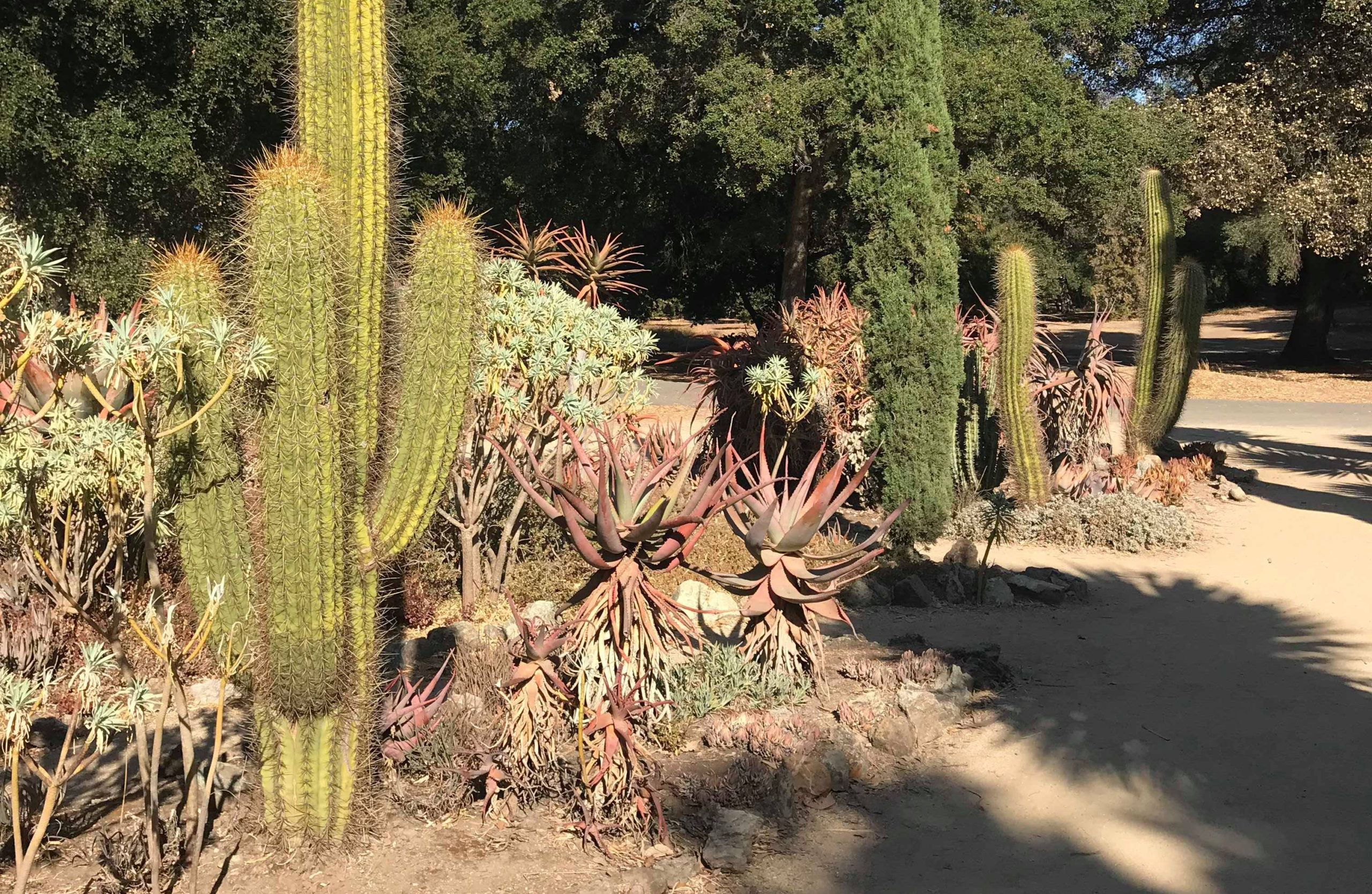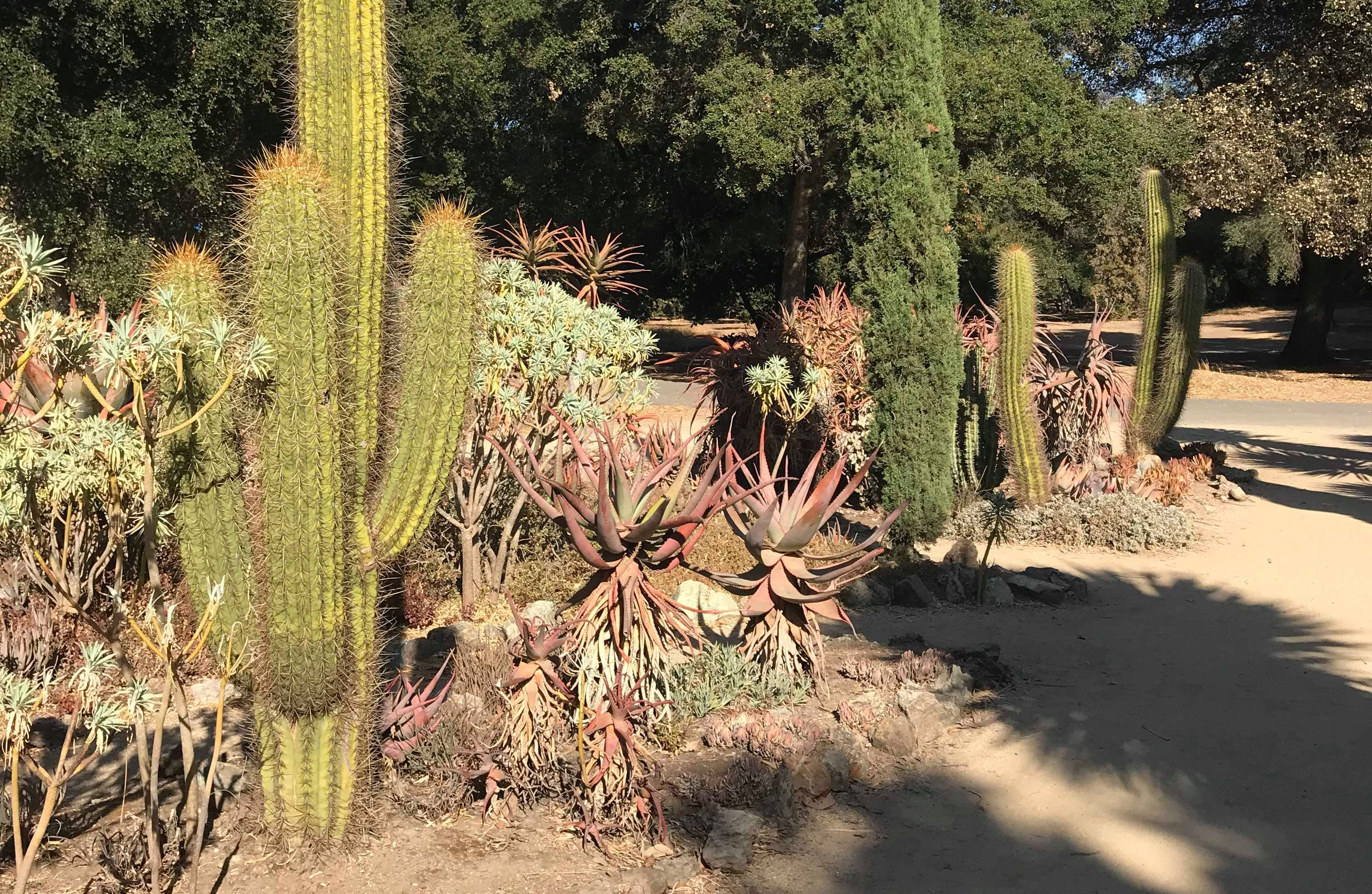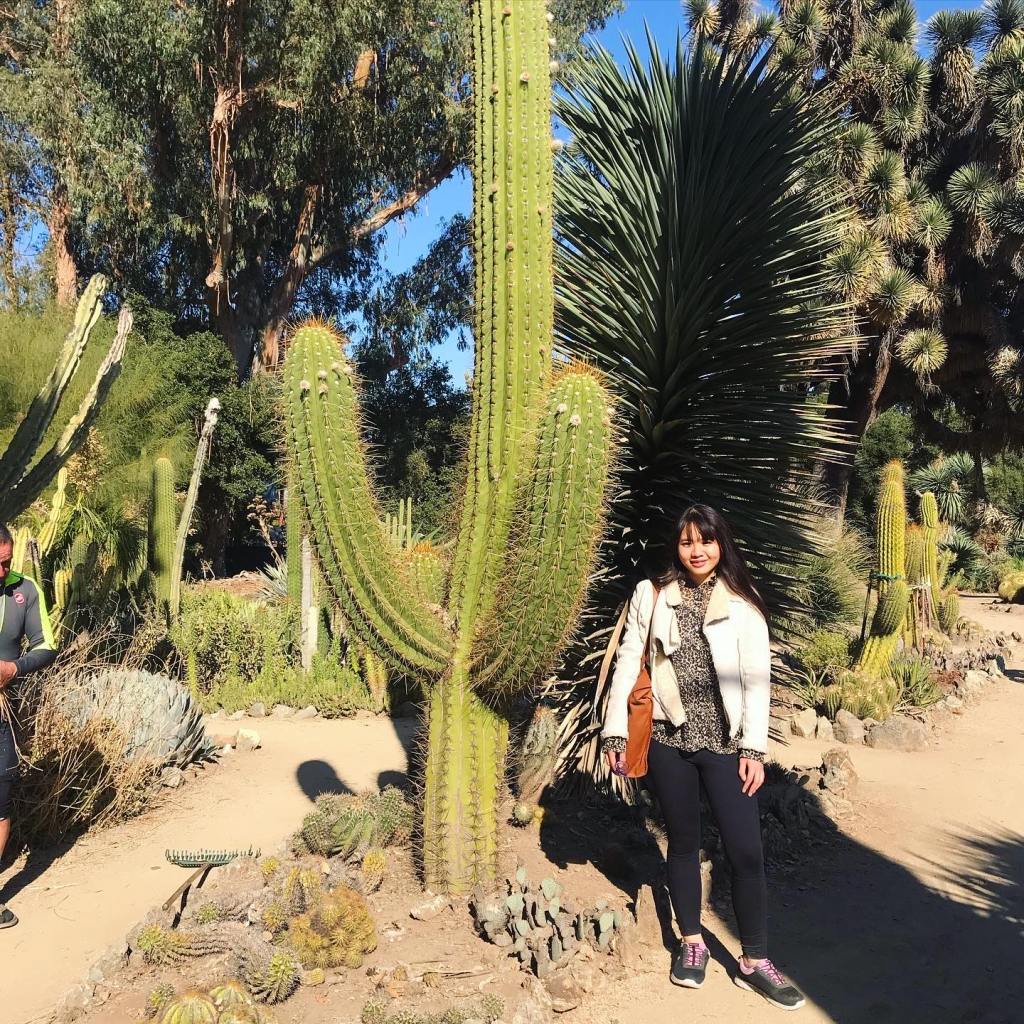As a plant collector, I hadn’t quite noticed cacti until recently. Not until The Good Place made a Janet joke about them or until Taylor Swift casually posed with one. I previously prided myself on collecting plants that flirted with death should I forget to water them — calatheas, fittonias, ferns, and so on. Many dead plants later, my heart finally opened up to the water-storing magic of succulents and cacti. My love became official after a visit to Stanford’s beautiful Arizona Cactus Garden, which is home to a vast collection of these gorgeous heat-tolerant plants. The plant that immediately stood out to me was the saguaro cactus, a longtime symbol of the American Southwest that’s now a casual foliage print on everything from wallpapers to bedsheets.
The tall, spiky Saguaro cactus is native to southern Arizona and Sonora, Mexico. It’s best known for its cartoony arms-slash-branches, which take about 100 years to grow — some saguaro cacti never even grow arms! You might see a red fruit on it in the summer and white blossoms in the spring. A saguaro can live up to between 150 to 200 years old, growing between 20 to 40 feet tall. Its roots are shallow but extensive. The main ones are typically two feet, but most of the others grow only four to six inches. The plant usually dies from old age or damage from wind and lighting, but freezing temperatures, heat, and bacterial rot are also other known killers. The good news is, it’s not going extinct any time soon. Most saguaros grow in Arizona, especially in the Saguaro National Park. Seeing these cacti everywhere got me to thinking — how has the saguaro cactus become synonymous with the American Southwest? Old El Paso (you know, that supermarket brand for taco shells) features packaging showcasing these cacti, but you won’t find naturally growing saguaro anywhere near this Texan city. We have the Western film industry to thank for the proliferation of this catch-all symbol. Directors of old cowboy flicks often included footage of cacti shot elsewhere for a Western vibe, even if the movie is set in a place where saguaros don’t naturally grow. Leo Banks, the author of All About Saguaros, told Tucson.com, “Humorously, the saguaro has shown up in films set in Monument Valley (in Northeastern Arizona). You don’t find saguaros growing there.” Over 300 westerns have been filmed in Old Tucson Studios, which served as a set location for movies such as Gunfight at the O.K. Corral, El Dorado, The Three Amigos, and Tombstone. The studio, built in 1939 for the film Arizona, is located in Tucson Mountain Park, which borders the infamous Saguaro National Park. Now, it’s an attraction site where you can experience rides, historical tours, and more. So there you have it, a brief history of this majestic cactus. As much as I’d like to propagate one, they’re rare to come by and retailers need a permit in Arizona to sell them. As they grow slowly, bigger ones can cost a pretty penny. You also can’t harm or vandalize them, which means that it’s illegal to swoop this cactus up from an Arizona park. And you wouldn’t want to. The huge ones can weigh up to four tons. In 1982, a man shot a saguaro weighing 500 pounds — it crushed him and his car when it fell. For now, it’s best just to admire saguaro as they exist in nature — or on cute designs!

